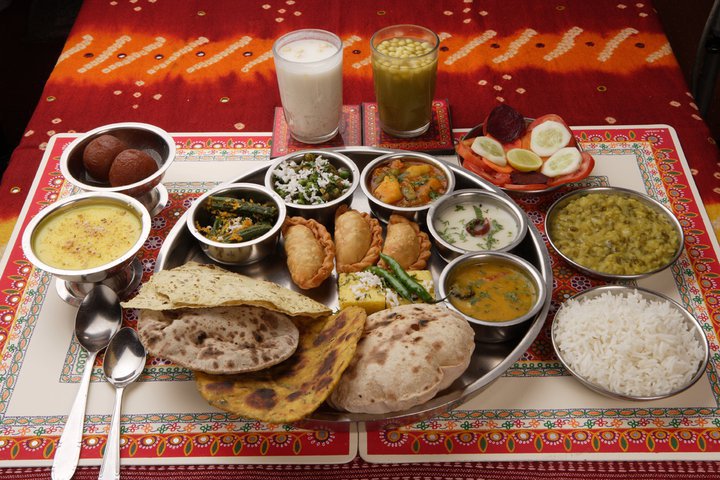With so many dishes to sample coming from so many different regions, one of the best ways to discover the cuisine is to opt for a thali. Like Greek meze or Spanish tapas, it is a way of trying a little bit of everything – a feast for both the eyes and the taste buds.
Most regions rely on the ingredients that are available to them. In Rajasthan, a state with a very dry climate, communities have learned to cook with buttermilk, cream, curd and milk in order to save their precious water. Rajasthanithalis are meticulously made and exquisitely presented. Vegetarian dishes are just as scrumptious as their meat counterparts. If you haven’t had a thali yet, it’s about time you try one. But what does a thali consist of?
Breads
Traditional breads consist of rotis, parathas and pooris. In Rajasthan, rotis are often made of makka, jowar and bajra. Besan is also a widely used ingredient in the cuisine. Dal baatichurma is one of the dishes people of Rajasthan hold dear to their hearts: small, round balls of bread made from flour and deep friend in ghee, sometimes stuffed with peas, lentils and onions.
Vegetarian Dishes
The royal thali platter has a whole host of veggie curries and dals to please the non-meat eaters amongst you. Gram flour and moong dal are popular and wadis – besan or moong nuggets – are also a common feature. Another go-to dish is gattekisabzi – a firm favourite within a thali – consisting of besan nuggets boiled in a flavoursome, rich gravy. Panchmeladal is a distinct recipe made using five varieties of lentils and is one of the most widely served dishes. In a typical Rajasthanithali, it is unlikely not to find dhana mung wadi, bundikikadhi, gate kikadhi, papadkisabzi, amraskikadhi and kersangri.
For those who eat meat, an authentic Rajasthani kitchen will rustle up some of the most mouth-watering delicacies, including mutton, chicken, fish and (occasionally) wild boar. Often extremely spicy, meat curries tend to be laden with chillies. Laal maas, for example, is one of the hottest dishes, combining chunks of meat with a healthy helping of fiery red chilli. Other popular meat-based dishes include bhunakukda and bajarigosht.
As mentioned, Rajasthani cuisine tends to use plenty of dairy ingredients, including milk and buttermilk. This works especially well when paired with meat, resulting in a decadent, creamy texture combined with the tender, juicy chunks of protein. Safed maas is a prime example of a meat dish cooked with cream, curd and milk.
In addition, a Rajasthanithali will consist of papads, salads, pickles and chutneys. Due to the land being hot and dry and cooks turning to dairy, raitas, chaach, thandai and sweetened lassis are popular accompaniments.
If you are looking to sample one of the freshest, tastiest thalis in the capital, head to one of London’s top Indian brasseries – Masala Zone. Here, you will find meat, vegetarian and fish thalis, with each and every dish adding a new and exciting element to your dining experience.

